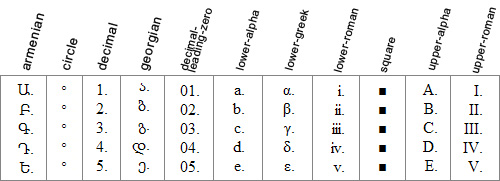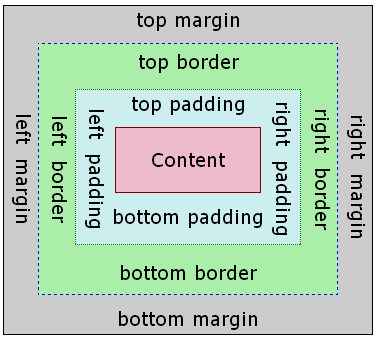<== Previous Lesson Next Lesson ==>
<== Home 🏠
- There are three types of HTML lists: ordered, unordered, and definition.
- Ordered lists use numbers
- Unordered lists use bullets
- Definition lists are used to define terminology
- Lists can be nestled inside one another (jsBook pg. 72)
- Browser automatically indents lists.
- Content - The content of the box, where text and images appear
- Padding - Clears an area around the content. The padding is transparent
- Border - A border that goes around the padding and content
- Margin - Clears an area outside the border. The margin is transparent
- The box model allows us to add a border around elements, and to define space between elements.
- CSS treats Each
[show every box with this code]
* {
border: 1px solid red !important;
}
div {
width: 320px;
padding: 10px;
border: 5px solid gray;
margin: 0;
}
320px (width)
20px (left + right padding)
10px (left + right border)
0px (left + right margin)
= 350px
The total width of an element should be calculated like this:
Total element width = width + left padding + right padding + left border + right border + left margin + right margin
The total height of an element should be calculated like this:
Total element height = height + top padding + bottom padding + top border + bottom border + top margin + bottom margin
| Property | Description |
|---|---|
| constructor | Returns the function that created the Array object's prototype |
| length | Sets or returns the number of elements in an array |
| prototype | Allows you to add properties and methods to an Array object |
Values in an array are accessed if they are in a numbered list. It is important to know that the numbering of this list starts a\t zero (not one).
From the Duckett HTML book:
- Chapter 3: “Lists” (pp.62-73)
- Chapter 13: “Boxes” (pp.300-329)
From the Duckett JS book:
- Review - Chapter 2: “Basic JavaScript Instructions” (pp.70-73)
- Chapter 4: “Decisions and Loops” from switch statements on (pp.162-182)
<== Previous Lesson Next Lesson ==>
<== Home 🏠


